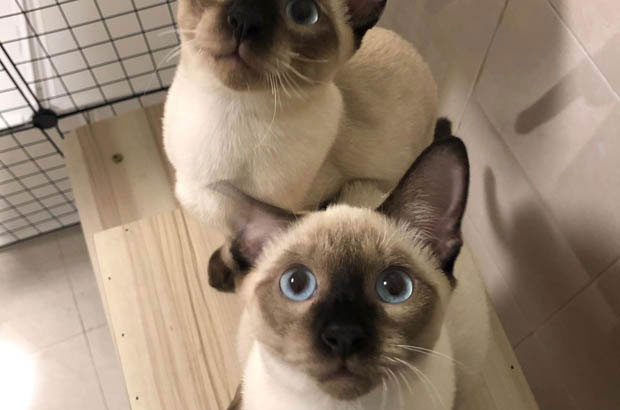In the wonderful world of pet keeping, choosing to raise Siamese cats is undoubtedly like embarking on a special “investment” full of risks and surprises. From the moment you bring that fluffy little guy home, you step into a journey full of unknowns, for no one can accurately predict what amazing changes this cute little life will experience on the road to growth.
The “color-changing magic” of Siamese cats is a wonder in the pet world, and behind this magical phenomenon lies complex and interesting scientific principles. The tyrosinase contained in their bodies (synthesized by the TYR gene) plays a crucial role in the synthesis and deposition of pigments. This tyrosinase has a unique “character” – its activity is limited, and it is extremely sensitive to temperature, as if it were a “temperature control master.”
On the body of a Siamese cat, in areas with lower skin temperatures, such as the face, ears, and limbs, the activity of tyrosinase is relatively high, promoting more pigment synthesis and deposition, so the hair color in these areas becomes extremely dark. Conversely, in areas with higher body temperatures, such as the back and lower abdomen, the activity of tyrosinase decreases, resulting in less pigment synthesis and relatively lighter hair color. This explains why Siamese cats often have a distinctive appearance with a dark face and a relatively lighter body.

As the seasons change, the hair color of Siamese cats also changes like the shifting seasons, allowing owners to deeply experience the magic of “a cat changes a lot as it grows.” In the cold winter, for owners of Siamese cats, it is a “battle” against “darkening.” If you don’t want your Siamese cat to gradually turn into a “little coal ball” in the cold, taking good warming measures is particularly important. Owners come up with various ideas, preparing warm and comfortable little nests for their Siamese cats, laying thick blankets, and even purchasing special pet heating pads, hoping to create a warm haven for them and slow down the darkening of their fur. When summer arrives and the temperature rises, Siamese cats seem to enter a “beauty comeback period.” The fur that turned dark in winter will gradually lighten with the increase in temperature, regaining a relatively white luster. However, there is an important prerequisite: do not easily cut the hair of Siamese cats. Because the shaved areas lose the protection of the hair and the temperature drops, the tyrosinase will become “active” again, making the newly grown hair quickly turn dark, and the expected “whitening plan” will fail.
In addition to the environmental temperature, which acts like a “color palette,” age is also an important factor affecting the hair color of Siamese cats. As time passes, as Siamese cats grow up, their hair color gradually darkens. From the cute white or light-colored kitten in their early days to the increasingly darker appearance in adulthood, each change is like a unique mark left by time. This change in hair color with age also allows owners to witness the wonderful transformation of Siamese cats from “youngsters” to “mature ones.”
Although raising Siamese cats is like an investment full of risks, and you can never precisely predict the rhythm of their hair color changes, it is precisely this element of the unknown and surprise that gives raising Siamese cats its unique charm. In the days spent with Siamese cats, every change in their hair color is like a special gift from life, enabling owners to form a deeper emotional bond with them amidst surprise, confusion, and laughter. No matter what they eventually look like, the lively and affectionate nature, as well as the agile and cute appearance of Siamese cats, have long been deeply engraved in the hearts of their owners, becoming the warmest and most precious presence in life. This journey of surprises and uncertainties, like an investment, will continue to write unique and heartwarming stories between humans and Siamese cats.
Leave a Reply